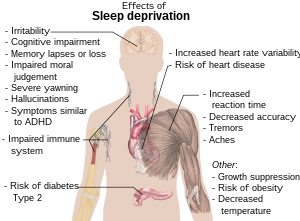I read this great bumper sticker a few months ago: “Kids who hunt, trap and fish do not mug little old ladies”. It got me thinking…
The Industrial Revolution brought with it an incredible opportunity for creative thinkers, builders and doers. Yet, the same seed spawned a cloud of laziness for the masses.
Sliced, pre-packaged bread – no need to make your own anymore…who’s got time anyway? We have gone and replaced the time we’ve gained from these inventions with more things to do. Because in truth, we are not lazy we are doers – each one of us. We have gained more time to do more, but at what cost?
My point is that for a large part we have lost the art for having to take care of ourselves. Not having to explore, create or examine because the fundamentals have been taken care of for us. This wheel of convenience has run amok.
Humans need to ‘do’. We are no different from the very busy animal kingdom. We see the birds preparing their nests for spring: tending, feeding and guarding their nestlings. This is their natural cycle, which is not so different from ours. But ours has gotten muddled up. Historically, our natural drive was to find shelter, be clothed, and eat three meals per day, dance and sing. Presently, we still have this natural survival energy. We need to burn it off somehow. If we do not find a constructive way to utilize this energy we are going to sit around and overeat. Much like the housebound dog that doesn’t get exercised; he gets himself into mischief to satisfy his natural drive, often in the way of eating a lone leather shoe or digging up the garden. Or, like the “kids who mug little old ladies”!
To think that those of us in Western society who are lucky enough to live in an age where education and personal development is attainable and affordable: from life coaching, music lessons or personal fitness training to name a few…isn’t that fantastic?
However, it is what we do with this gift of learning that is worth questioning. Has it become an affordable disposable luxury much in the same way that food has become? (Read FUEL http://youasamachine.com/fuel-2/ to know what I’m talking about.)
Let me pick on personal training since it is my background. Does personal training work? It depends. It always depends on a variety of factors. It depends on whether you hire a trainer as an educator or as your motivator.
I know way too many people going to personal trainers and not making progress. Sure, maybe at the beginning when doing anything new will have an effect. But as time goes on the people I have talked with admit to not doing any workouts except for when they have a scheduled appointment. And even fitting in those appointments becomes challenging.
I think personal training would be more effective overall if sessions were viewed more as lessons, like swimming, martial arts or piano lessons for example. A lesson being something whereby you acquire further understanding of a subject. You learn, practice, refine, learn more, practice more, refine more etc.
For the most part personal training has become a service of sorts, a session in which a client is often mindlessly put through their paces. They leave feeling wiped out and think they got their money’s worth. But has the client learned anything in the process? Money can buy an hour with the best trainer on the planet but I don’t believe that it can buy health or a lean well-conditioned body. But if it does, it is only a temporary transformation. Yes, you’re better off having done a mindless session than none at all. But this reinforces dependence.
Your body doesn’t know how much money you have or don’t have. You can deceive the mind but not the body.
If a client is seeing a trainer once to three times per week for a year and hasn’t made a significant change, which is to blame, the trainer or the client? I would think that after one year of private instruction a client would be very well versed and on the road to becoming self-sufficient and accountable. But that rarely happens. Why?
In order to make progress in any subject we need to understand the fundamentals. Before we can read we need to learn our A-B-C’s. In terms of our physical health and fitness we need to have a grasp of basic anatomy. Does this mean that in order to brush our teeth effectively we should first be schooled in dentistry? Not quite. But our brains are able and hungry for knowledge and up for the challenge.
We all should be well versed in our anatomy and physiology, but we aren’t. We let the experts take care of us! We let doctors prescribe pharmaceuticals. We let our governments come up with ‘programs’ to raise awareness to better our health. It’s all fluff. We need to take control of us. En masse, we need to give our heads the proverbial shake. Just like handing over our hard earned life savings to the expert to invest for us and not having done any research into where or what it is being invested.
Each and every one of us needs to become accountable. We need to learn about how our body works so we can take care of it – and stay out of mischief.
Be accountable. Become your own expert.
“Live as if you were to die tomorrow. Learn as if you were to live forever.”
– Gandhi (1869-1948)



